|
|
| |
|
|
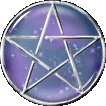 |
Pagan Kids |

|
|
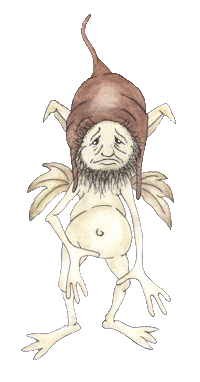
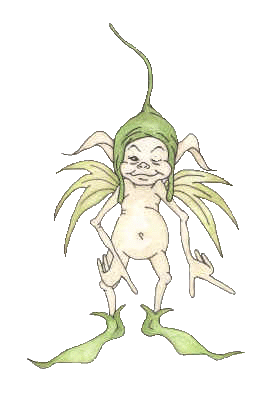
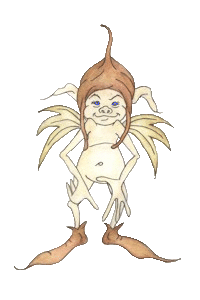 |
Nature
Spirits
Nature spirits which include elementals
are believed to be various types of beings or spirits which
inhabit Nature. The belief in their existence was almost
universal in the ancient era of religions which embodied
animism. This belief still exists among many people who
believe that all things possess life, which is especially true
among most occultists and Neo-pagan witches. These spirits are
thought to possess supernatural powers and are usually invisible
to humans, save those possessing the psychic ability of
clairvoyance.
Nature spirits usually abide in trees, rivers, plants, bogs,
mountains, and minerals. They attached themselves to practically
every natural thing.
We call them by a myriad of names - fairies, elves, devas,
nymphs, gnomes, etc. Elementals have similarities to other
nature spirits, they work on feelings, sensations, and
symbolism. They are not a "being" in the same way other faeries
are. They are more like a form of living energy than anything
else. An energy with a will, that can display emotions without
being emotional, and that is constantly changing. They can be of
tremendous aid to your magical workings, but only if you
approach them properly.
Elementals
are of a lower type of nature spirit. They are believed to exist
as the life force in all living things. They are said to even
exist in the four elements of earth, air, fire, and water; the
planets, stars, and the signs of the zodiac; and the hours of
the day and night, and they don't really have a definite form or appearance. They are raw
forces of nature. A large part of the weather itself. Mother
Nature's little helpers if you will. The elementals have their
own agenda - they are not subject to our whims and desires. They
have a definite purpose, which we may not understand, and which
may not necessarily be to our benefit, but may be for the good
of the planet as a whole.
If they choose to show themselves to you, they may choose a form
that you will associate readily with the element they represent. A
fire elemental may appear as a spark, a face in a candle flame or
bonfire, or simply a warm spot that you suddenly walk through. A water
elemental may be a cold spot. An air elemental could be a sudden
breeze or tiny whirlwind in the dust. A smell, taste, or an
unexplained pebble in your shoe could be evidence of the earth
elementals at play.
They are ruled or governed over by higher spirits such as
devas or archangels (which in modern witchcraft are called
Lords of the Watchtowers, the Guardians, or the Mighty Ones).
Generally elementals are looked upon as benevolent creatures
that maintain natural harmony
The elementals cannot be controlled by us, and frankly, you are deluding yourself if you believe that you can, and you
are a fool if you try. The elementals have extraordinary power
and cannot be tamed or controlled. They are far beyond us. If
you tamper with them, you are certain to irritate them. They are
likely to lash out at you. It could be a gentle nose tweak. Or
they could destroy you. Best not to chance it. You may ASK the
elementals to help you accomplish a specific task (politely,
mind you), and if they feel like helping or feel that your goal
is worthy, they might. The best route is to try to earn their
favour and stay on their good side. And remember, just because
they don't help you one time, doesn't mean they won't the next.
They have a very strong sense of justice, propriety, and right
and wrong. Explain your goals very clearly and honestly. You
can't deceive them, and it would be dangerous to try.
The Neoplatonic Greeks (ca. third century
AD)
grouped the elementals according to the four elements of life.
The elementals of the earth are the gnomes, ruled by the angel
Ariel; the ones of the air are the sylphs, ruled by Cherub; the
ones of the water are the undines, ruled by Tharsis; and there
are five elementals that are salamanders, ruled by Seraph.
Also included among elementals are elves who live in woods
and along seashores, and household spirits such as goblins,
brownies, bogles, and kobolds. Sometimes fairies are included
within the elemental category, and also mannikins which are male
fairies having the attributes of elves, gnomes, and brownies.
Other types of "little people" as they are called do inhabit
forests and mountains. Some are said to possess powerful
medicine which they frequently bestow on humans in times of
need.
Elementals do appear to clairvoyants and are easy
recognizable. Many are claimed to wear clothes and jewellery.
Gnomes are dwarfish living in caves and mountains. Sylphs appear
as butterflies, undines as waves, and salamanders as lizard-like
creatures that frolic in flames.
Earth spirits are known as Gnomes,
Air spirits as Sylphs, Fire spirits as Salamanders, and Water spirits
are called Undines.
After the Wiccan circle is formed and
consecrated with the elements, after calling the Quarters to preside
and watch over the proceedings, specific elementals whose natures best
suit the work or rite being carried out may then be invited to
participate. Care needs to be taken when calling the aid of
elementals. Elementals are not always the helpful little creatures we
would like them to be, and can be mischievous, bad tempered little
devils if allowed to get out of control.
|
|
|
|
Gnomes
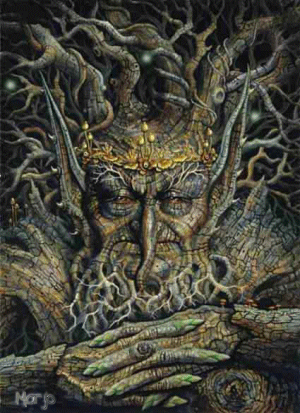
The nature spirits of the Earth are called Gnomes. They possess a vibratory rate that makes them invisible to
humans, but one that is still close enough to the lower physical
vibration for them to interact with it. Their actions are reflected in
the presence of mineral deposits, the erosion of rock, and the
formation of crystals and other geological formations.
In ancient legends, the Gnomes were protectors
of secret treasures concealed in vast caverns beneath the earth. The
old sages taught that the Gnomes were not naturally inclined to aid
humankind, but if a person won their confidence and trust, they would
prove to be valuable allies. However, like all elementals, it was
dangerous to deceive them or misuse their aid. Elementals work through
the subjective nature of men and women, and can influence the human
mind. Gnomes have the capability to bring about gloom, melancholy, and
despair. Conversely, Gnomes can also bestow confidence, steadfastness,
and endurance.
Gnomes are ruled by a king whose name is Gob.
His followers came to be called Goblins as tales of them were told and
retold over the centuries. They usually appear to humans as small,
dwarf-like creatures.
Gnomes are the most substantial of the
elementals. They dwell in holes, mines, and caverns. They are the most
like us in personality, with all its good and bad points, but they are
especially prey to all the weaknesses in human nature. They are called
upon for help with money matters, stability, and growth. Gnome
associates or subgroups include:
Brownies,
Dryads,
Durdalis,
Earth Spirits,
Elves,
Hamadryads,
Pans,
Pygmies,
Sylvestres, &
Satyrs.
Sylphs
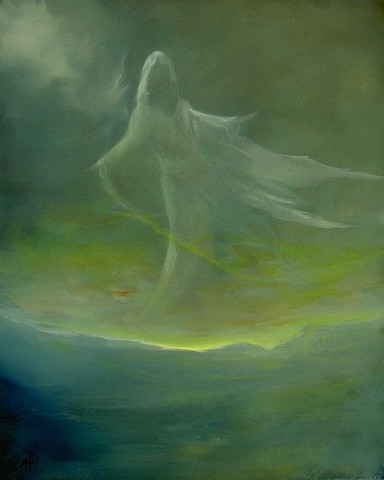
The sylphs are the air spirits. Their element has the highest
vibratory rate of the four (beside earth, fire, water). They live
hundreds of years, often reaching one thousand and never seeming to
get old. They are said to live on the tops of mountains. Legend has it
that they once spoke to human through caverns and were the voices of
ancient oracles.The leader of
the sylphs is a being called Paralda who is said to dwell on the
highest mountain of Earth. Sylphs often assume human form but only for
short periods of time. The vary in size from being as large as a human
to being much smaller. They are volatile and changeable. The winds are
their particular vehicle. The work through the gases and ethers of the
Earth and are kindly toward humans. They are usually seen with wings,
looking like cherubs or fairies. Because of their connection to air,
which is associated with the mental aspect, one of their functions is
to help humans receive inspiration. The sylphs are drawn to those who
use their minds, particularly those on creative arts.
Their activity is reflected in the gathering of clouds, the
formation of snowflakes, and the growth and maturity of all plant
life. They are the spirits of the wind, and were the source of many
Greek myths and legends. Among the Elementals as a whole, As Sylphs are
of the highest vibration and can thus traverse the dimensions more or
less at will.
Sylphs are active, quick of movement and speech.
They are clever and intelligent, but can be subtle in their
persuasiveness. By nature, Sylphs are aloof and detached. They are
called for help in creation or resolution of issues involving the
intelligence and the mind, or products of intellect.
Sylphs are beings of wide-open spaces and the
air. Sometimes they are depicted as cloud beings. Sylphs are
responsible for the myths of "angels", the winged protectors of the
Garden of Eden. Their attitudes embody the extremes of nature,
mercurial and intense. Most of all, they defend the high peaks and
wilderness mountains that are their home.
Sylphs are creatures of the air, and their great
wings allow them to soar with the eagles. Sylphs are believed to be an offshoot
branch of the sidhe, winged rulers of the Dreaming, controllers of the
weather and the great birds of the mountains.
Sylphs are loners, content to soar the skies
with the eagles. They care little for the machinations and politics of
"ground folk", and they rarely interfere with changeling society. Like
trolls, sylphs hold their word of honor to be inviolate, and once
sworn to protect something, they will defend it to (or even past)
their death.
Like the sidhe, sylphs are very regal in manner
and bearing. Theirs is an ancient and proud legacy, and it is dying
out. Fewer and fewer sylphs fly as the modern world creeps in. Most
sylphs feel that this is the end of their race, that they will be the
first of the kiths to slip into the Fimbulwinter. It is for this
reason that they have come down from their mountains and rejoined
changeling society in large numbers. If they are to die, then at least
they will be remembered for the honor, glory and majesty that is
inherent to their kind.
Appearance Sylphs resemble tall, lithe humans -
with one exception. Sprouting from their backs are a pair of huge
feathered wings. These wings are almost 2 body-lengths long, but fold
up behind the sylph when they are on the ground. Their eyes are large
and shaped like a hawk's, and their faces are sharp and angular.
Childlings sylphs are timid and flighty. They
rarely associate with others, but when they do, they usually form
bonds that last for life. They are called Cherubs by the rest of
changeling society.
Wilder sylphs are intense and direct, like the
birds of prey they resemble. They soar endlessly through the skies,
looking for something to attract their interests and allow them to
prove their worth.
Undines
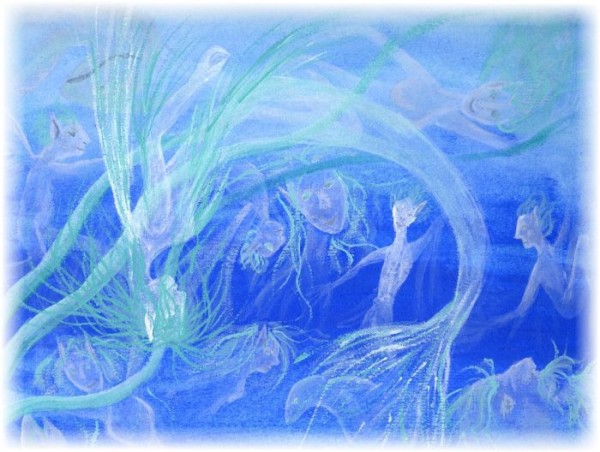
The undines are the elemental beings that
compose water.
In ancient lore, they are recalled in the images of water
nymphs and mermaids. Undines favour springs, streams, and wells. Their
traditional abodes were among marsh reeds and vegetation growing
alongside rivers and lakes.
Undines are ruled by Necksa. They are friendly
toward humans and their presence has a strong influence on our
emotional well-being. The moodiness of an individual can be traced to
their elemental nature (such as when we say that a person is "all
washed out"). Just as water can be beautiful in a fall or river, it
can also be unattractive in a stagnant pool.
The activity of Undines is responsible for the
vitality within all liquids - therefore they play a vital role in
plant, animal, and human life. Undines appear to human most often in
full human shape, as beautiful maidens.
Undines are sensual and graceful in their
movements, with very strong emotions. Undines are the most human and
seductive of the four elemental types. They tend to be sympathetic and
loving, and are most helpful in matters dealing with emotional issues,
such as love and friendship, desire and lust.
They are
able to control, to a great degree, the course and function of the
water element. Etheric in nature, they exist within the water itself
and this is why they can't be seen with the normal physical vision.
These beings are beautiful to look at and are very graceful.
They are
often seen riding the waves of the ocean. They can also be found in
rocky pools and in marshlands. They are clothed in a shimmery
substance looking like water but shinning with all the colors of the
sea, with green predominating. The concept of the mermaid is connected
with these elemental beings. The undines also work with the plants
that grow under the water and with the motion of water. Some undines
inhabit waterfalls, others live in rivers and lakes. Every fountain
has its nymph. Every ocean has its oceanids. The undines closely
resemble humans in appearance and size, except for those inhabiting
smaller streams and ponds. The undines often live in coral caves under
the ocean or on the shores of lakes or banks of rivers. Smaller
undines live under lily pads.
The undines work with the vital essences
and liquids of plants, animals, and human beings. They are present in
everything containing water. There are many families of undines, as
the chart indicates. The ruler of the undines is a being called Necksa. The undines love, serve, and honor her unceasingly. They are
emotional beings, very friendly and open to being of service to human
beings. The smaller undines are often seen as winged beings that
people have mistakenly called fairies. Those winged beings are seen
near flowers that grow in watery areas. They have gossamer wings and
gossamer clothing. Undine associates or subgroups include:
Limoniades,
Merfolk,
Naiads,
Oceanid,
Oreads,
Potamides,
Sea Maids,
Water Spirits.
Salamanders
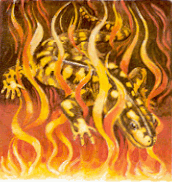
The salamanders are the spirit of fire. Without
these beings, fire cannot exist. You cannot light a match without a
salamander's being present.
It is through their activity that fire exists and can
be used by humankind. Fire elementals were the first elementals to
befriend humans, teaching our ancestors how to make campfires.
Salamanders are ruled by king called Djin.
Salamanders move about most freely at night,
appearing as balls of light drifting across various bodies of water.
Old-time sailors often saw them investigating the sails of their ships
- from this came the term "St. Elmo's fire", describing the mysterious
forks of flame that often appeared on old sailing vessels.
Salamanders have a profound effect on human
nature since they are linked to the activity of our bodies through
which we maintain a body temperature. They tend to influence general
temperament, such as when someone is "hot-blooded" or a "hothead".
Salamanders often appear to humans in the shape of small, lizard-like
flames.
Salamanders are explosive, quick in movement,
and very bright. They are also unstable, especially with respect to
emotions. Fire is traditionally associated with Will, so one can
expect Salamanders to be forceful and highly opinionated. They are
called upon to help in matters involving the discipline and exercise
of the Will and Power, including willpower, conflicts with others,
war, and courage. However, due to their unstable natures, calling upon
Salamanders carries its own risks as fire-based anomalies may be
experienced in the general area in which they are called.
There are
many families of salamanders, differing in size, appearance, and dignity. Some
people have seen them as small balls of light, but most commonly they are
perceived as being lizard-like in shape and about a foot or more in length. The
salamanders are considered the strongest and most powerful of all the
elementals. Their ruler is a magnificent flaming being called Djin. Those who
have seen him say that he is terrible, yet awe-inspiring in appearance.
Salamanders have the ability to extend their size or diminish it, as needed. If
you ever need to light a campfire in the wilderness, call to the salamanders and
they will help you. It has also been said that salamanders (and the other
elemental beings) can be mischievous at times. For example, a fiery temper and
inharmonious conditions in a person's home can cause these beings to make
trouble. They are like children in that they don't fully understand the results
of their actions. They are greatly affected, as are all nature spirits, by human
humankind's thinking.
|
|
|
|
|
|
|